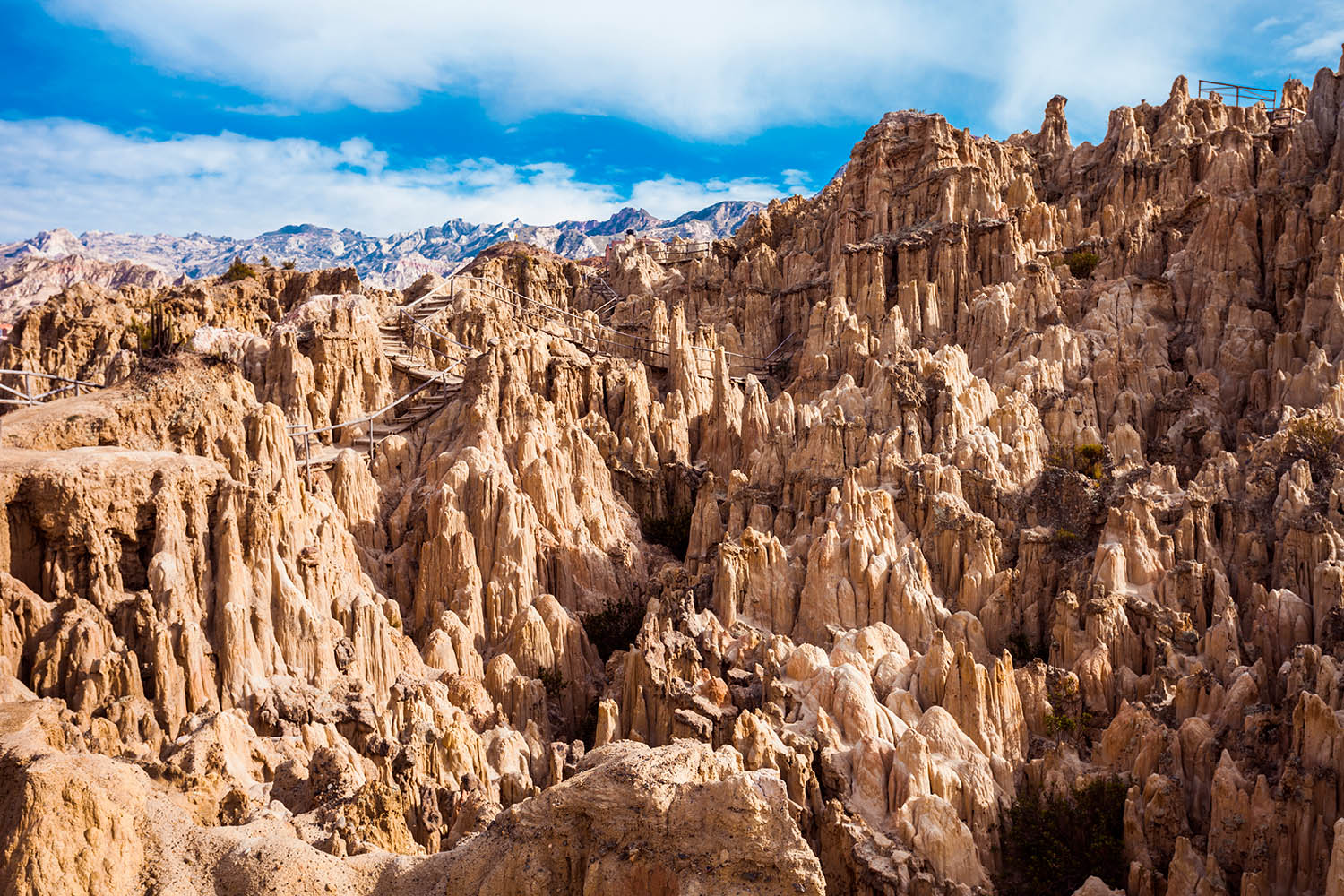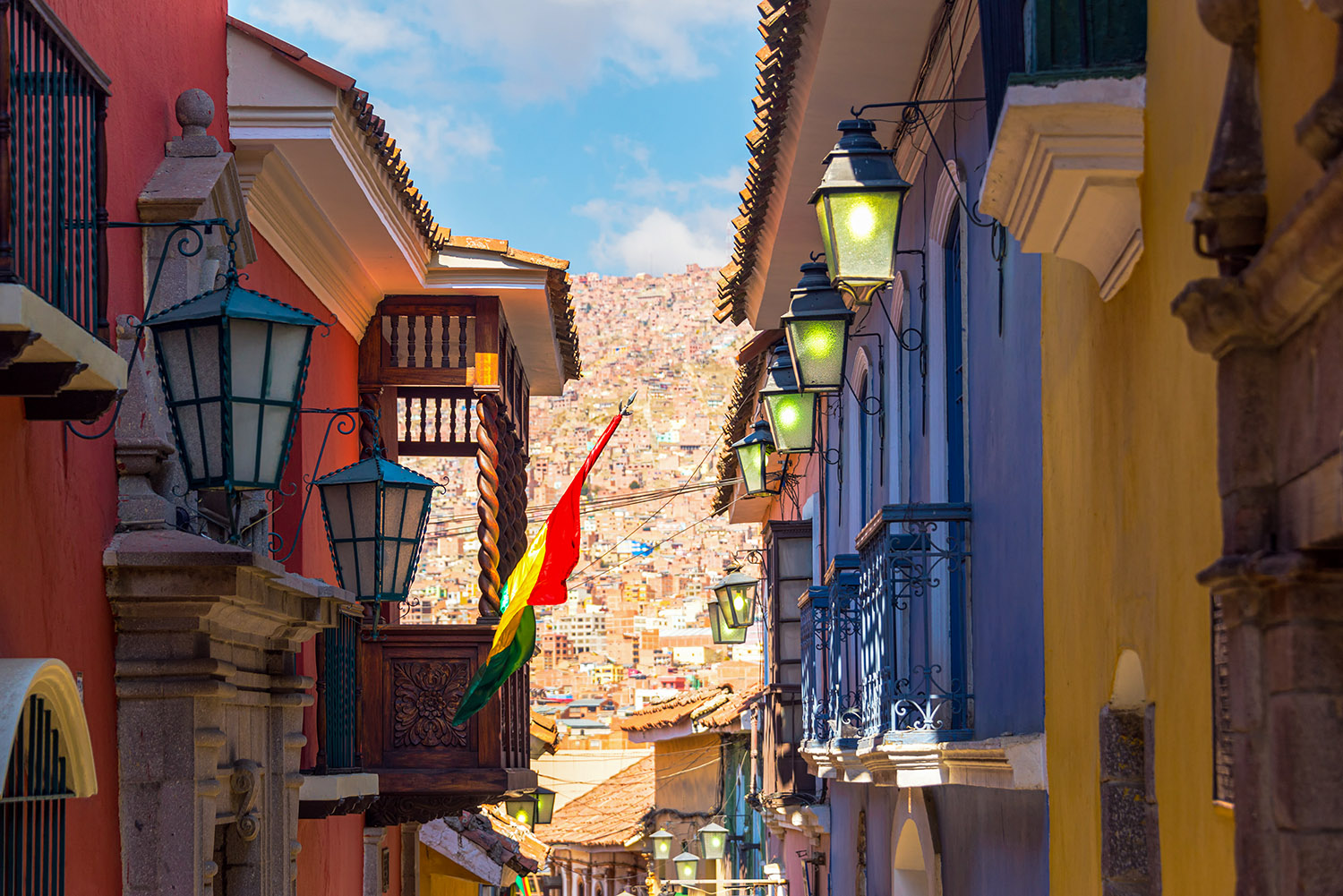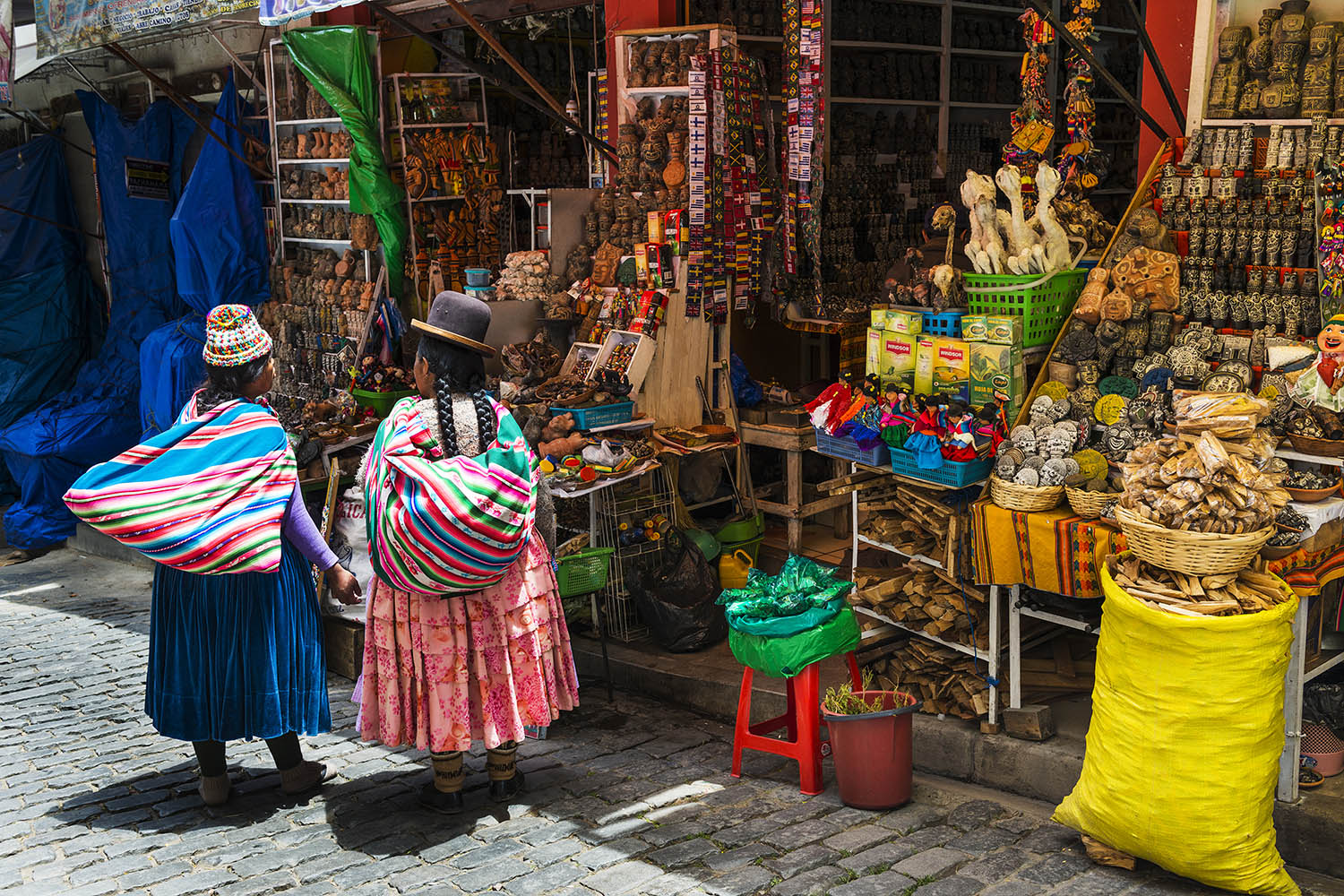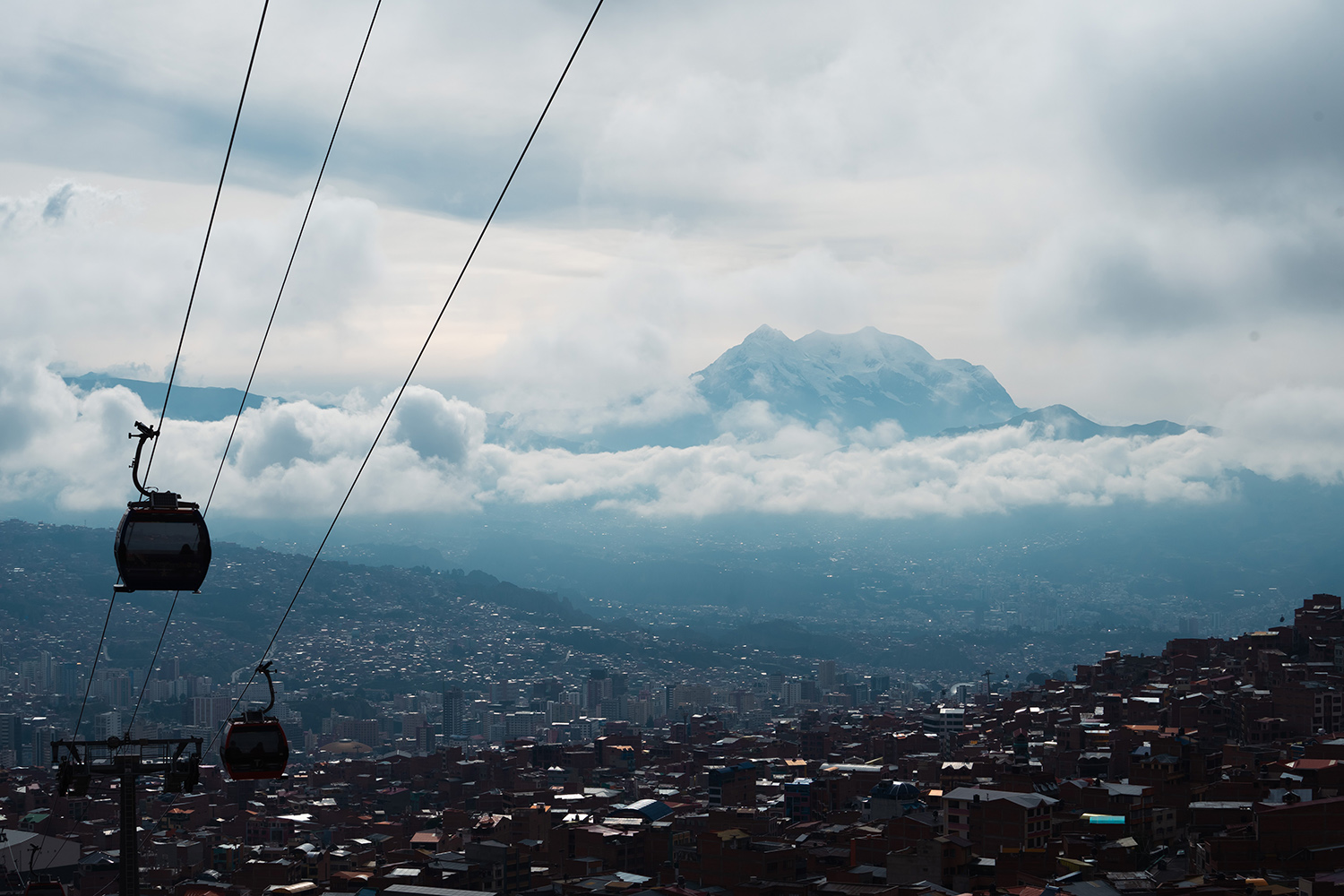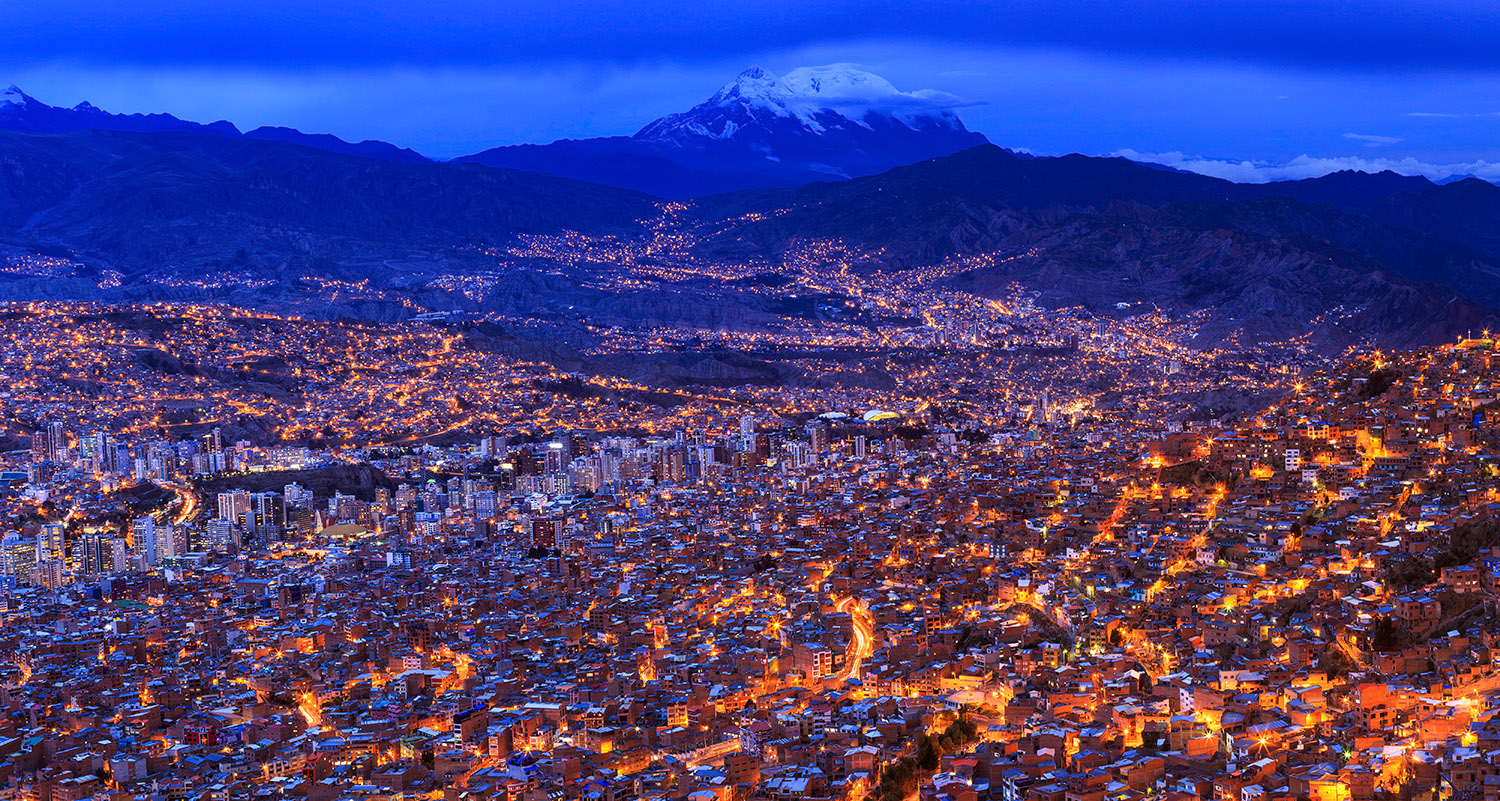
Insider tip Bolivia: Why we travel to La Paz now
It is the highest capital in the world - and attracts with extreme altitude differences and great sights: La Paz! These 12 highlights in and around the metropolis in the Andes should not be missed.
March 25, 2022
Those who start their journey to the Andean city are initially amazed at its improbable dimensions: La Paz is located in western Bolivia, on the altiplano plateau that rises a proud 3,500 meters above sea level. The highest seat of government in the world is still considered a Top Secret Travel Tip among the "Trotamundas" - high time to reveal the secret ...
Good to know
Best time to visit: May to October
Flight duration: from Vienna to El Alto-La Paz About 20 hours with several stops in between
Must have experienced: "Festividad de Nuestro Señor Jesús del Gran Poder", dazzling traditional street festival with dances and costumes between May and June.
Old colonial buildings line Jaen Street in La Paz, making the walk a colorful trip back in time. © Shutterstock
La Paz: a city of extremes
Bolivia's cultural and economic center was founded in 1584 and christened "Nuestra Señora de La Paz" - since brevity is the well-known spice, the city is called La Paz, the Peace, by the whole world. Today, Bolivia's capital attracts not only with impressive Andean panorama and perfect climate from May to October, but also with its bright cultural life, authentic cuisine, many charming markets and day trips to spectacular natural spectacles.
La Paz captivates with its joie de vivre and colorfulness, especially at the many stalls and markets. © Shutterstock
The approach via El Alto on the high plateau reveals unforgettable views: the southern district of La Paz drops deep down into the Río Chokeyapu Canyon, the Andes tower dizzyingly high all around. The rise within the city is just under a thousand meters. Don't worry - fortunately, thanks to the city cable car, tourists don't have to conquer this on foot.
Worth reading for photographers: Are these the 12 most unusual Instagram hotspots in the world?
La Paz ranks 156th out of 231 cities in the world ranking of the most livable cities © Jack Prommel
Check-in: Top hotels in La Paz
The Atix Hotel of the popular design hotels convinces also in Bolivia as usual with outstanding interior, excellent service and best cuisine - in front of the doors you knock the dust of the day off your shirt to finally enter and switch off. Comfortable and luxurious, the Atix the ideal starting point for a city trip to La Paz.
Alternatively, luxury, elegance and comfort can now be found in Calacoto, one of La Paz's trendiest neighborhoods: Here, just recently, the MET Hotel opened. Great!
Really cool: The new MET Hotel in La Paz. © Design hotel / Valeria Dorado
La Paz for Foodies
In Bolivia gourmands encounter the highest vineyards in the world. The noble reds have a unique, intense - sometimes somewhat idiosyncratic - characteristic, which is due to the high solar radiation. Anyone traveling in the streets should be aware of the countless streetfoodstands and shimmy through the various snacks of the Bolivians: The Platanitos fritos, fried plantain chips, are simply delicious sweet or spicy, also the cinnamon ice cream Helado de Canela should be tried. For breakfast, take a stroll through the Mercado Rodriguez - here the rule is: just follow your nose!
Popular throughout South America: platanitos fritos, fried plantain chips. © Kelly Sikkema
Best places to eat:
Gustu
"Gustu" is the Quechua word for taste - and the restaurant in La Paz certainly proves it. Here, they serve traditional Bolivian cuisine based on Claus Meyer's New Nordic Cuisine Manifesto. Chef Marsia Taha uses fresh, seasonal and, above all, regional ingredients in hearty creations, from caimans to carpaccio with insects from the Amazon. Top!
gustu.bo
Ali Pacha
"Ali Pacha" means "universe of plants" in the ancient Aymara language. In fact, vegans, vegetarians and everyone who loves good food are at the right address in this restaurant in downtown La Paz: They specialize in meatless dishes, but with plant-based dishes and fine cocktails they are sure to meet every taste.
alipacha.com
7 Highlights you should have seen in La Paz
1. public transport above the clouds: Mi Teleférico
Admittedly, the city's cable car network was created primarily to relieve traffic in the streets. But Mi Teleférico is also a real highlight from a tourist point of view: The colorful gondolas of the ten cable car lines hover high above La Paz, and here it's hard not to pull out your camera every few minutes.
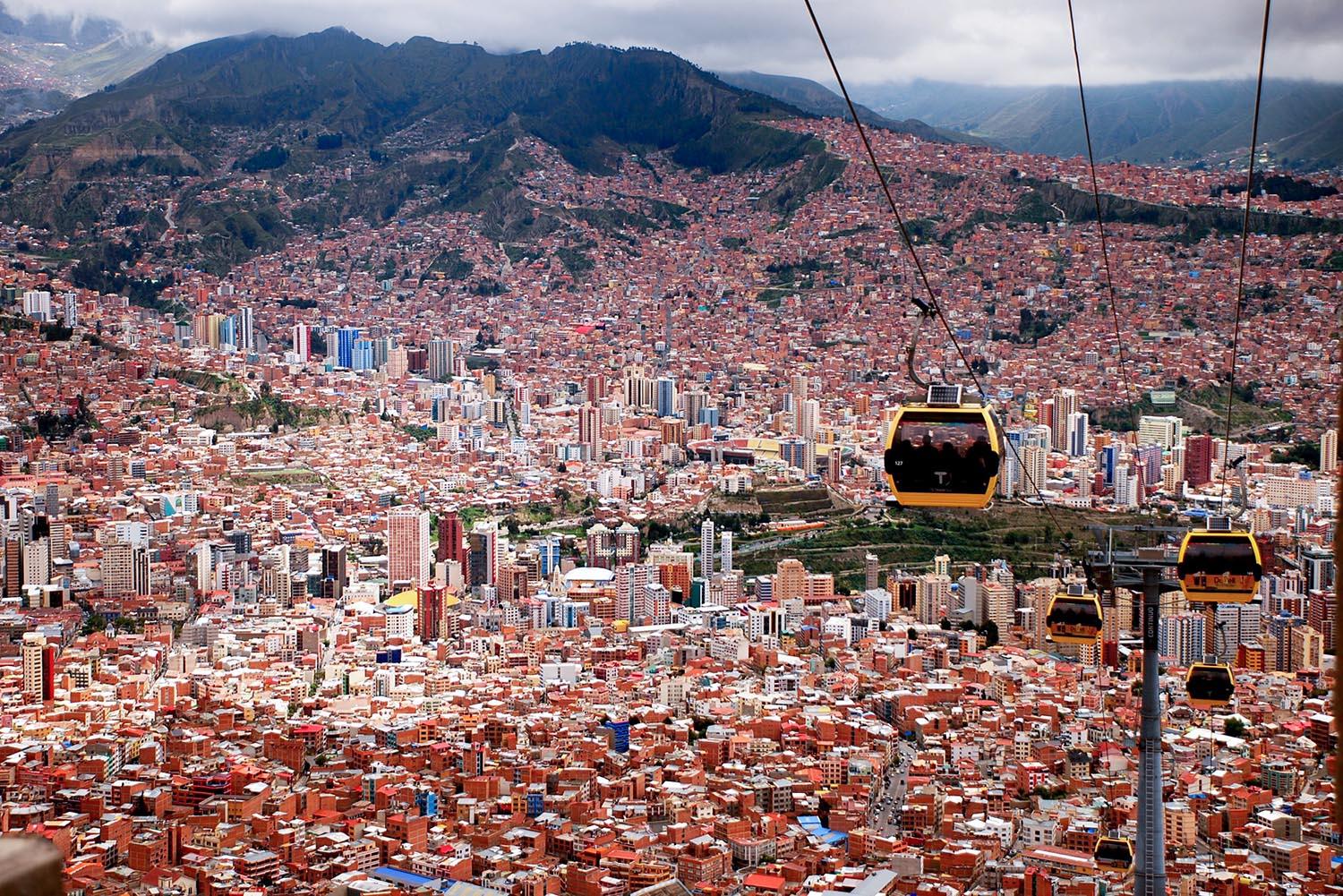
2. Illimani: an impressive local mountain
The local mountain Illimani towers proudly above La Paz with its four snow-covered peaks - the six-thousand-meter peak is the second highest mountain in Bolivia and a real postcard motif. If you want to climb it, you need not only time (the ascent takes four days), but also skill. Without a mountain guide, even experienced summiters should not dare to approach the 6,438 meter high giant!
The Illimani can also be observed from a safe distance from the gondolas of the city cable car.
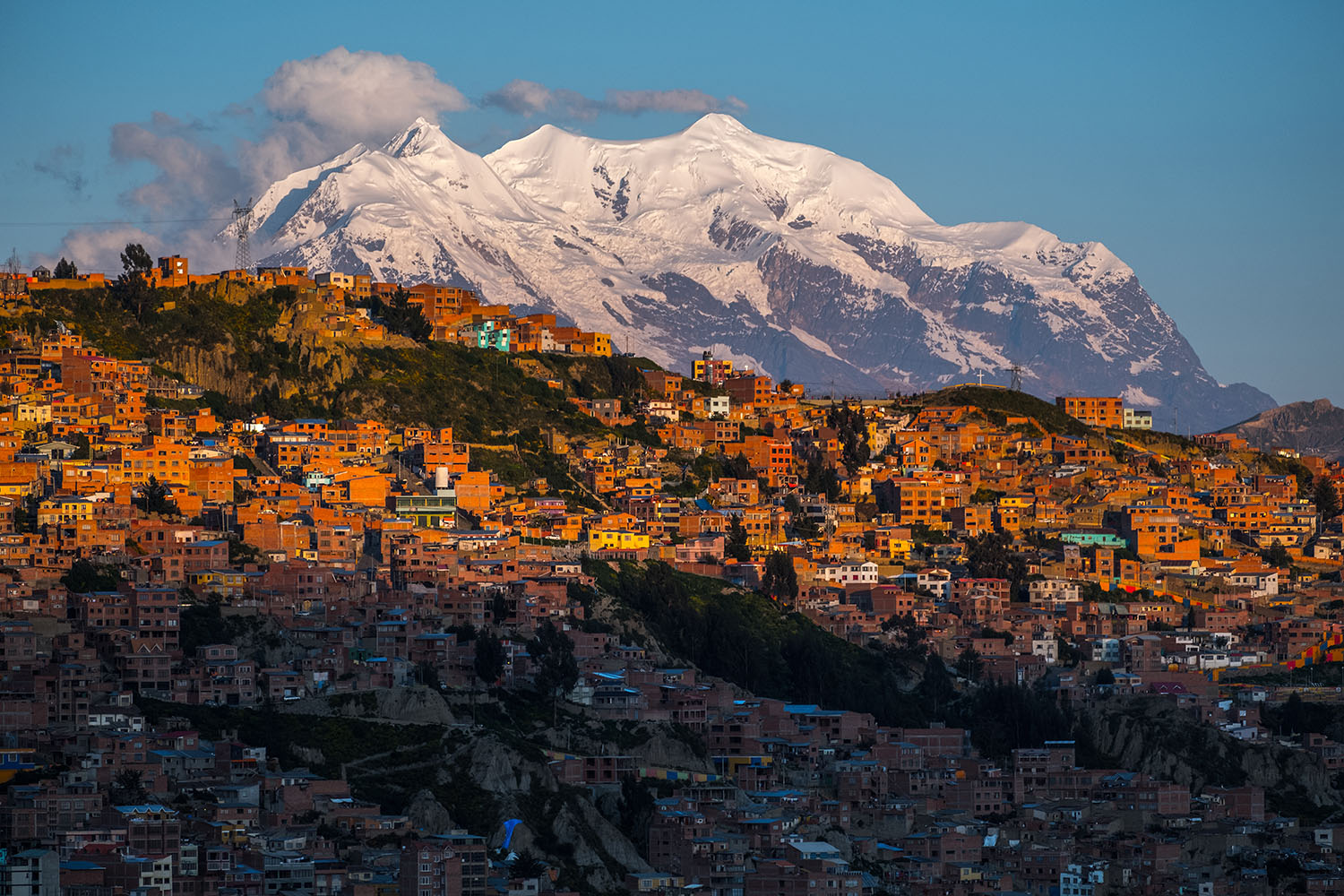
3. explore the old town of La Paz
La Paz's old town is Casco Viejo, whose pulsating heart is Plaza Murillo. Here, on shady benches, you can nibble on your platanitos fritos, relax and watch the hustle and bustle - it's a great way to pass the time. Numerous sights are located in the immediate vicinity of the square, such as the Presidential Palace, also known as "The Burnt Palace," and the Cathedral of La Paz.
Those interested in culture are drawn to the Museo Nacional del Arte. Works by Bolivian artists from the 16th, 17th and 19th centuries hang on the walls, and the building itself, a baroque structure made of pink sandstone, is also quite impressive.
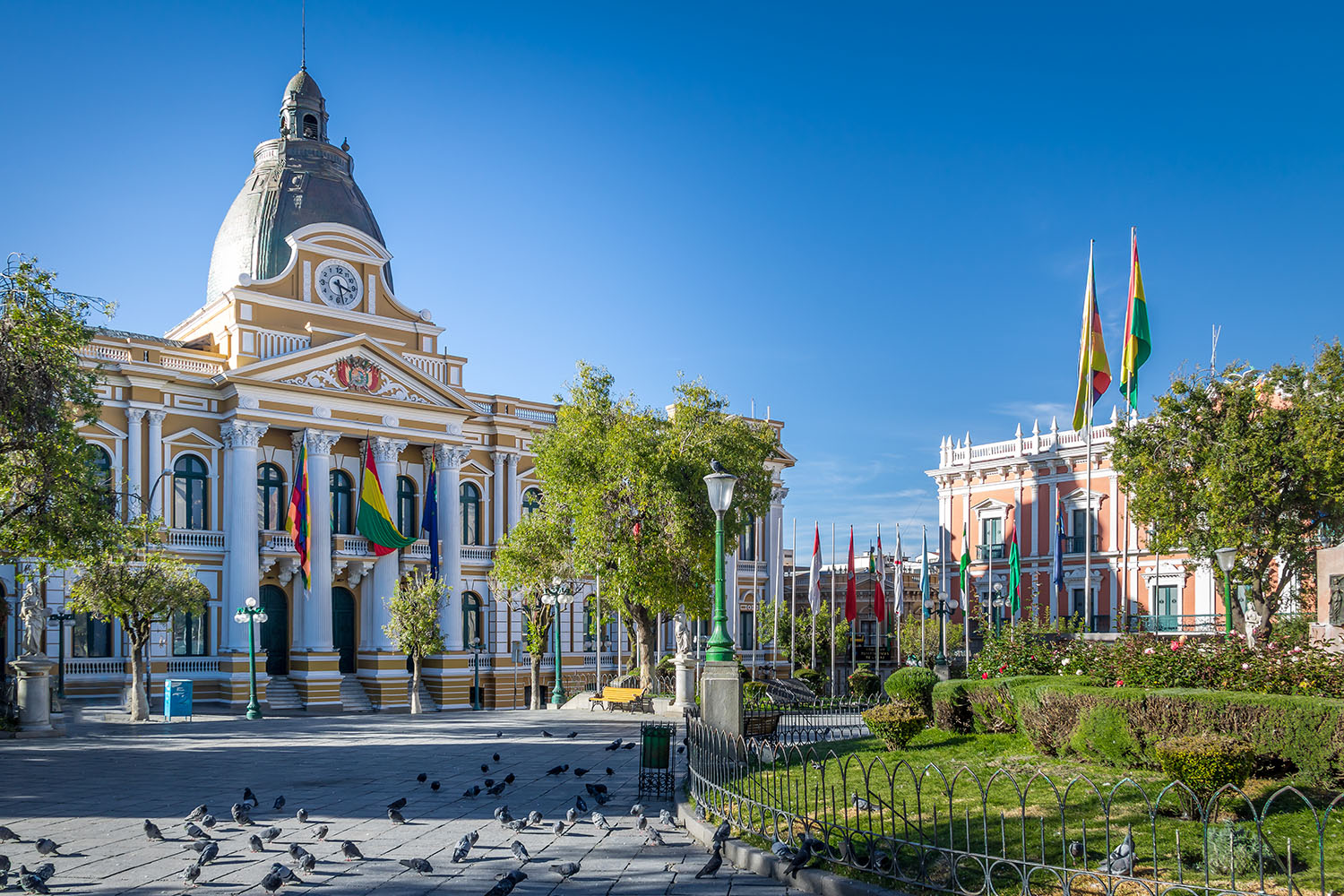
4. to worship: La Paz' churches
Bolivia's capital has been blessed with some outstanding sacred buildings. Above all, the eponymous basilica in Plaza San Francisco de Asís, a grandiose 16th-century structure with its own museum and monastery, and La Paz Cathedral in Plaza Murillo are well worth a visit.
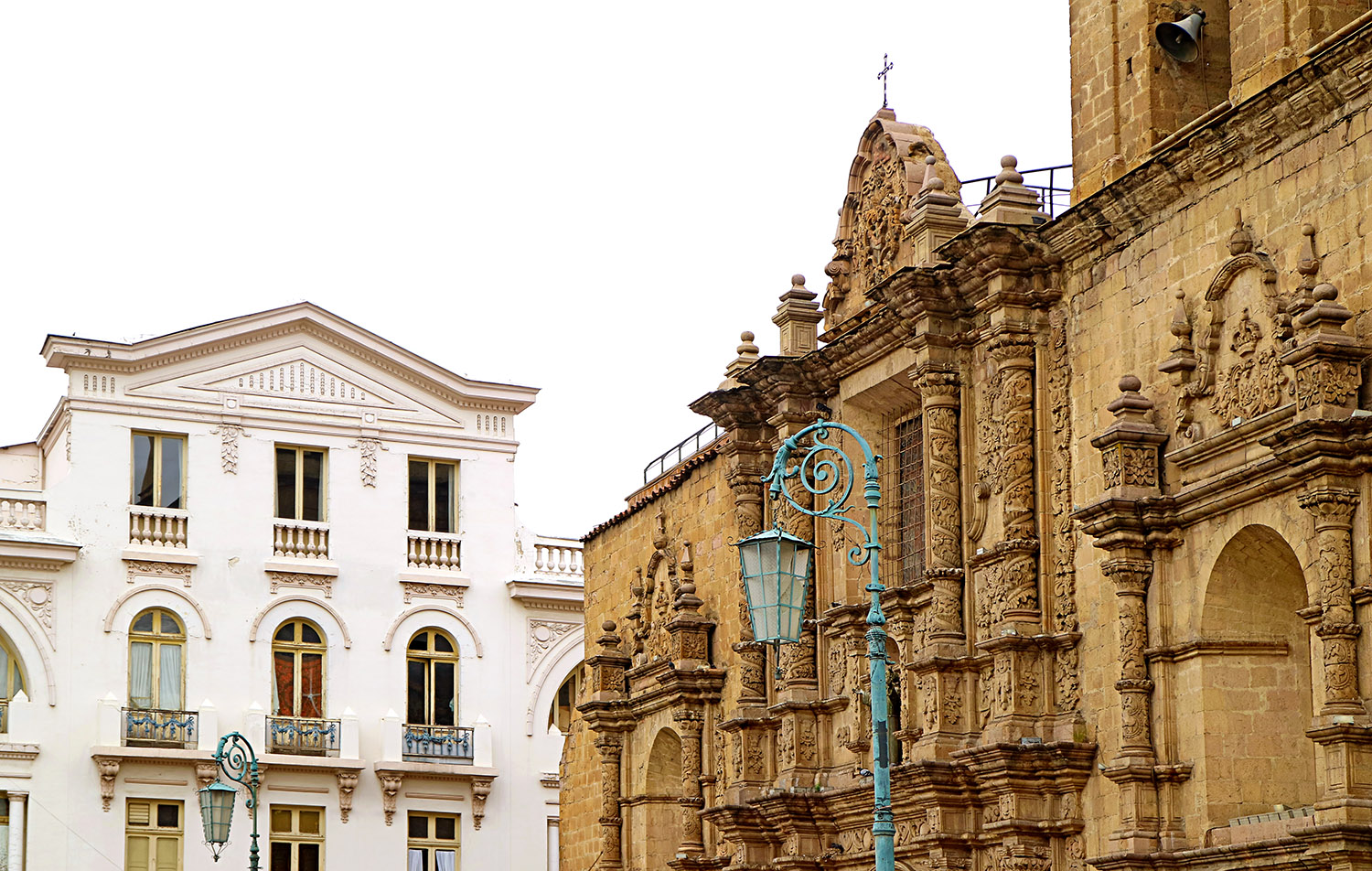
5. stroller's paradise: the flea market of El Alto
On Thursdays and Fridays, the higher district of El Alto attracts flea markets. The huge selection - from T-shirts to trucks - is impressive. And it's hardly surprising that the El Alto flea market, with its five kilometers, is one of the largest markets in the world. The best thing to do here is simply to let yourself drift, strolling among the stalls to find a lucky find or two among the odds and ends. You can fortify yourself at one of the countless street food stalls, where fried food is particularly popular. Beware of pickpockets!
By the way: If you have had enough of strolling, you should definitely stop by the buildings of the Neo-Andean architect Freddy Mamani.
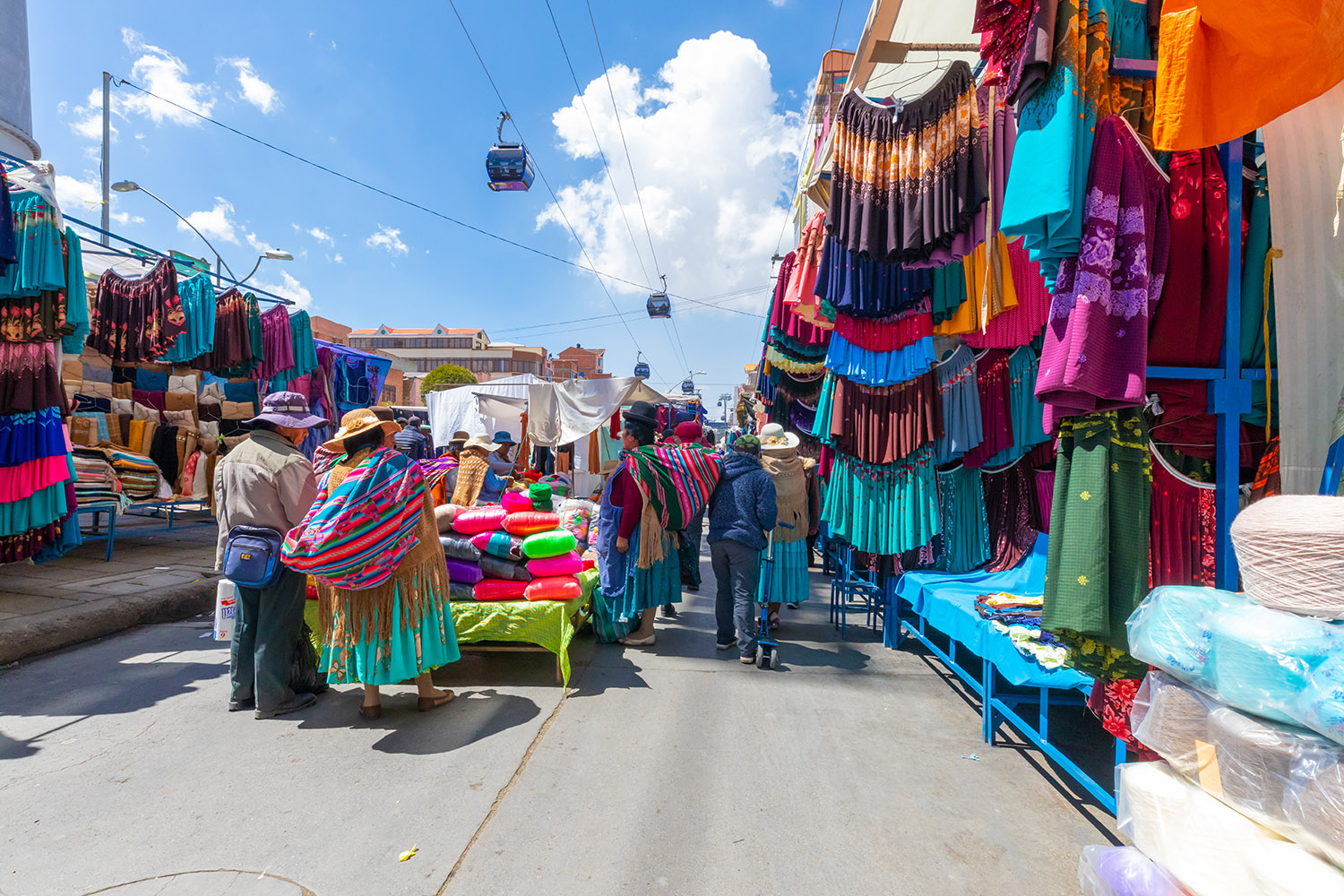
6. magical: the witches market
From the strolling street Sagarnaga you directly get to the mystical Mercado de Las Brujas, the witches' market. On every corner, numerous whimsical objects await curious buyers. Magical herbal mixtures, indigenous leather goods and jewelry are also on sale here.
You don't have to be afraid of curses, even if the name implies otherwise. Rather, the Mercado de Las Brujas sees itself as the marketplace of the Yatiris, the descendants of the Aymara, whose traditional healing arts and ceremonies can be experienced here up close. Exciting!
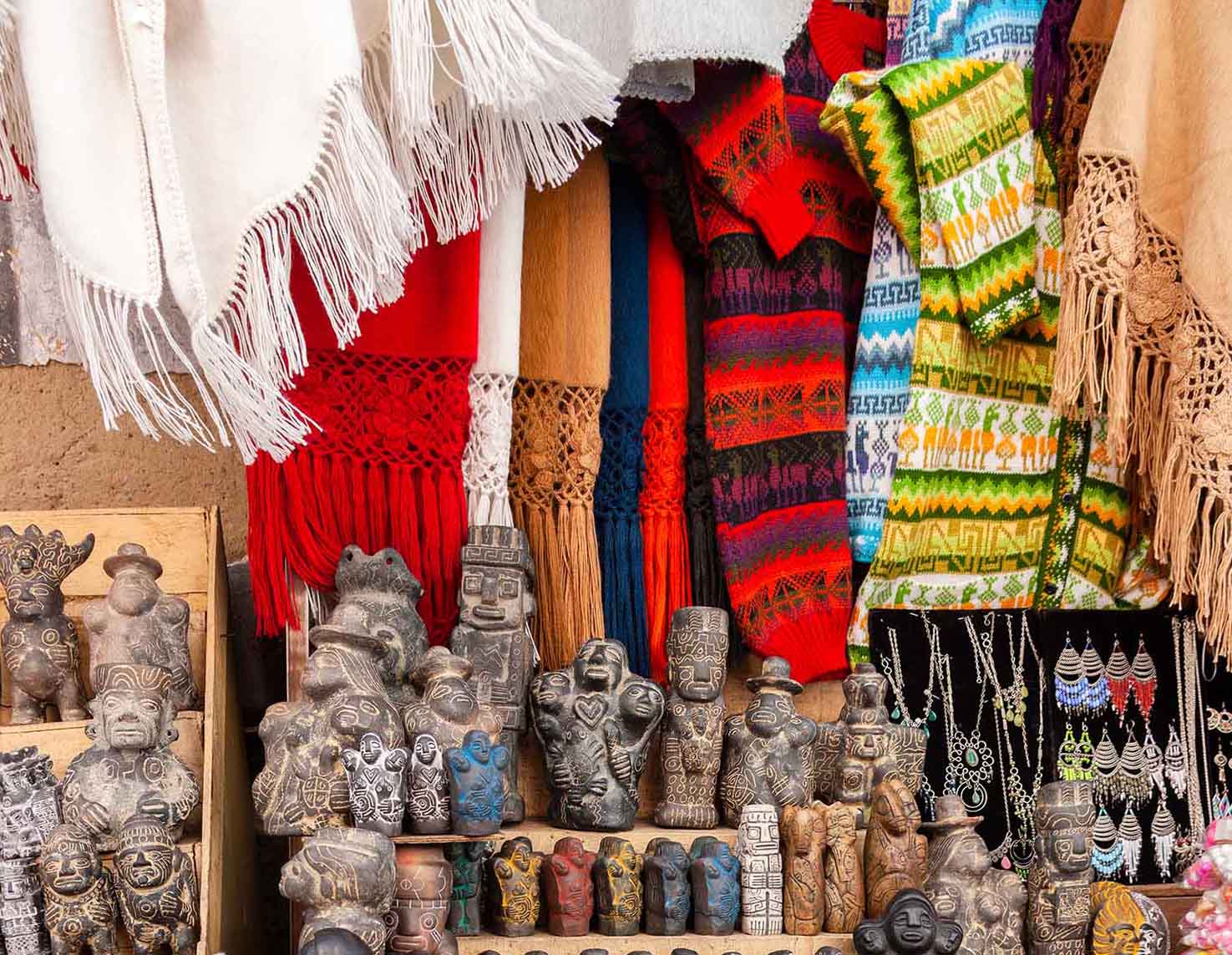
7. mirador killi killi
In the northeast of the city lies the Mirador Killi Killi, a peaceful green viewpoint with panoramic views of all of La Paz. Great!
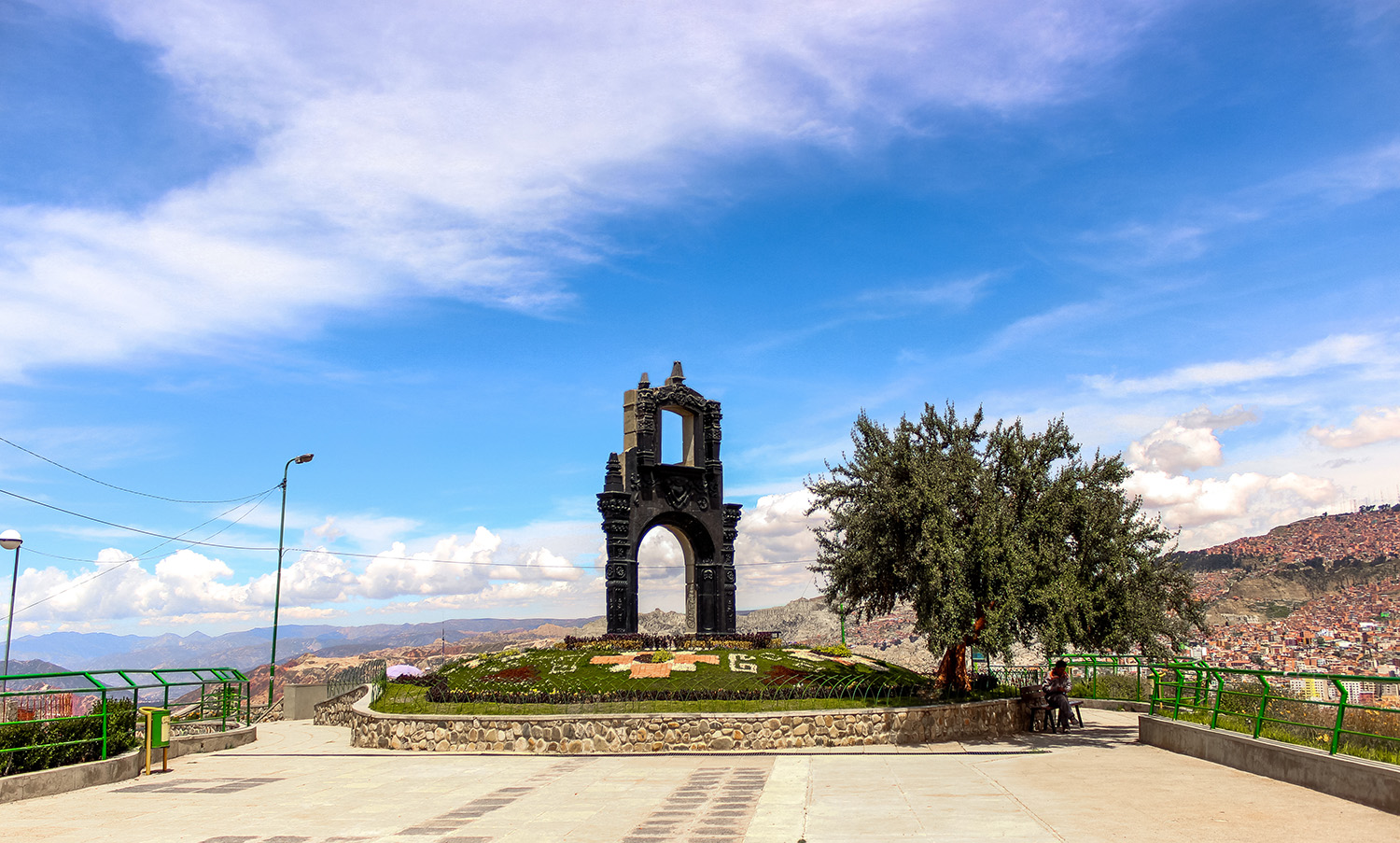
5 great day trips from La Paz
1. past petrified souls
The Valley of Souls, the Valle de las animas, beckons with unique geological formations. The jagged, reddish-brown sandstone rocks rise steeply from the ground - and invite you to spectacular canyon hikes.
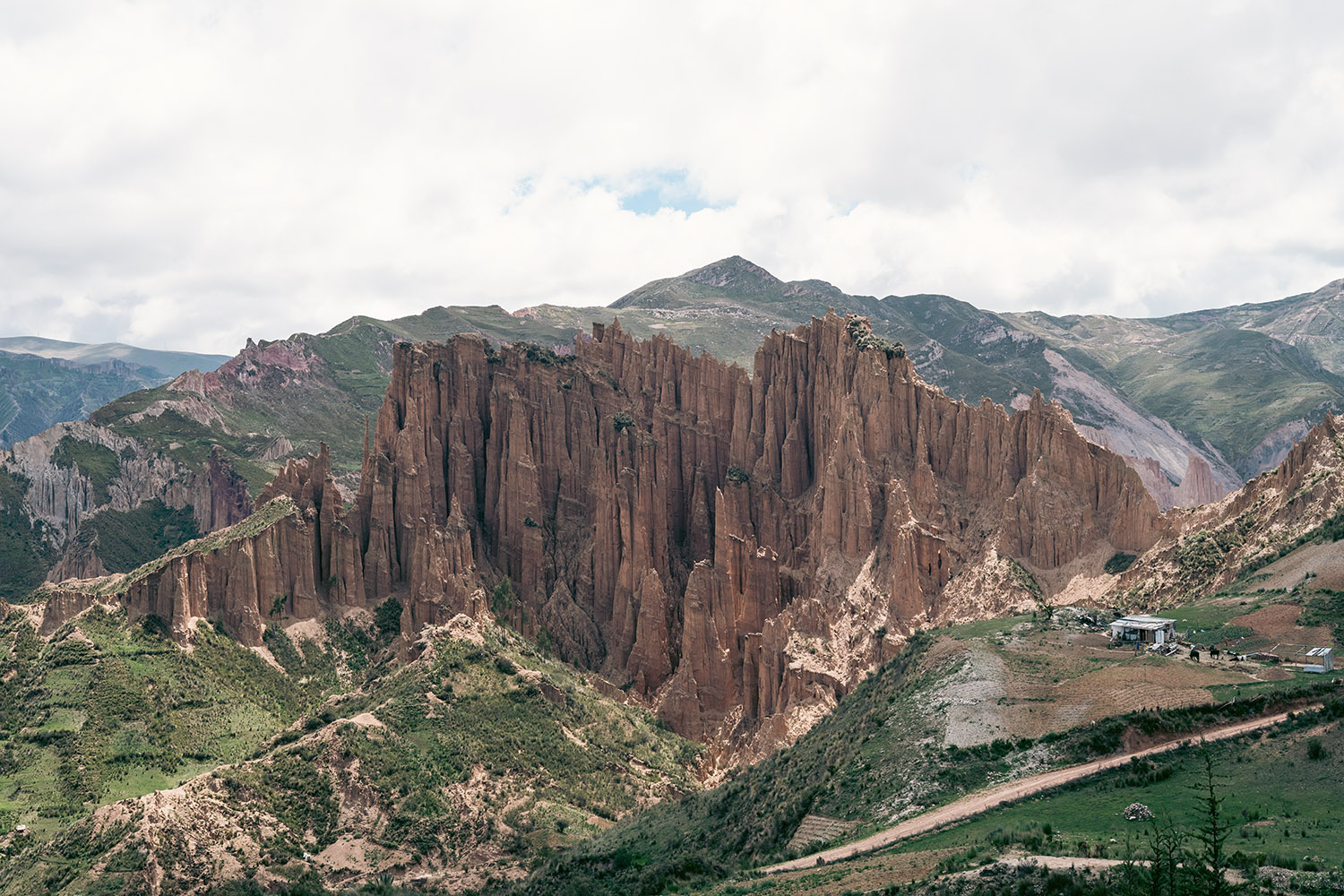
2. the salt of the earth
The largest salt pan in the world must be seen: The Salar de Uyuni extends over more than 10,000 square kilometers and fascinates in the rainy season with impressive reflections. Flamingos can also be seen here from time to time. The huge salt crust, an ancient paleo lake, has existed for 10,000 years!
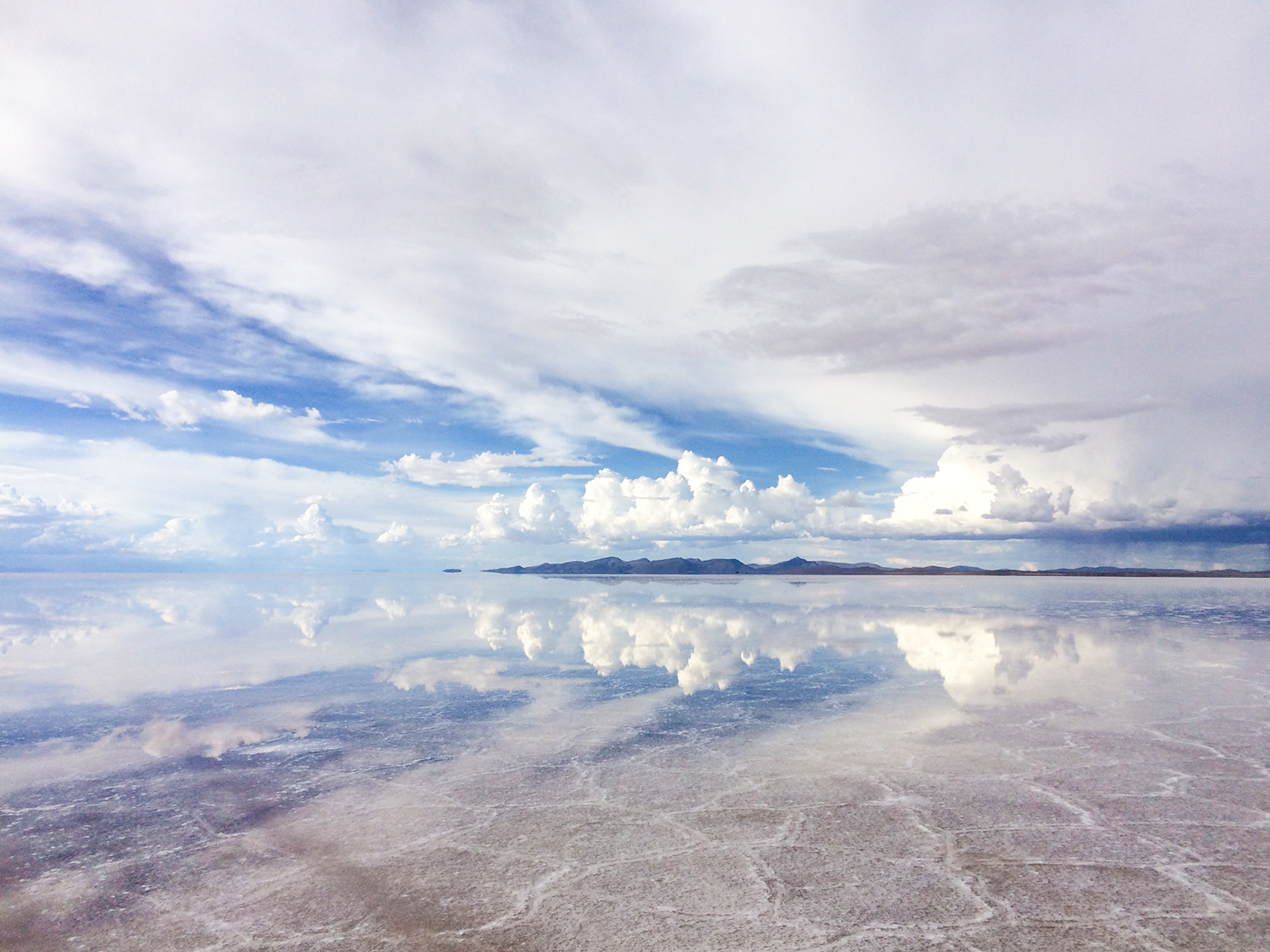
3. off to the Copacabana!
Sounds like a wild party, but it is much quieter and quite beautiful: Copacabana is a country town on Lake Titicaca. In the crescent-shaped bay at an altitude of 3,818 meters, the temperature is a pleasant 15 degrees; here you are allowed to relax and unwind.
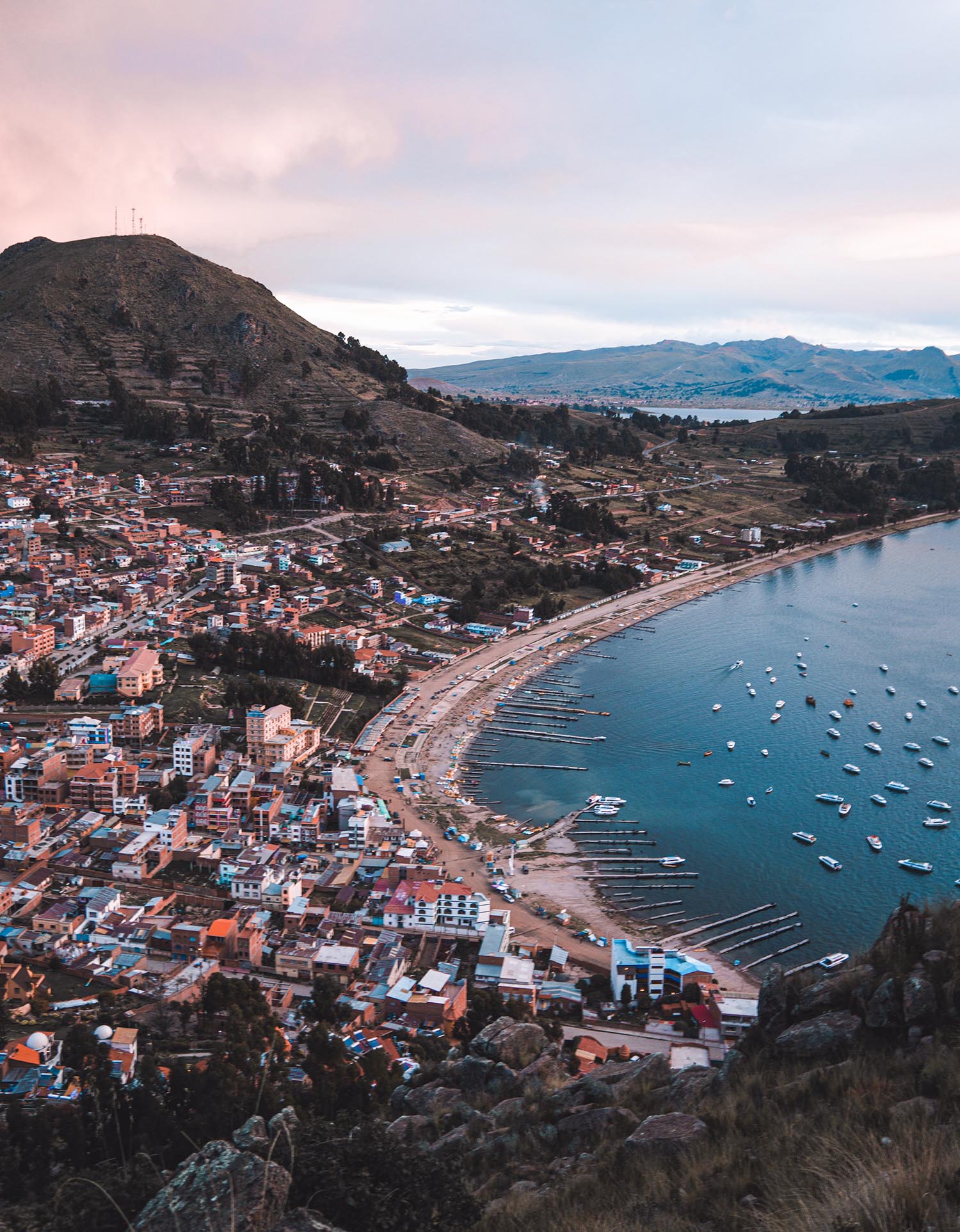
4. explore the Tiwanaku ruins
The Tiwanaku, who settled southeast of Lake Titicaca between 1,000 BC and 1,000 AD, once built the city of the same name, also spelled Tiahuanaco in Spanish. The metropolis once stretched over more than 650 hectares, making it the largest in South America. Today, extensive ruins bear witness to the former grandeur of the pre-Inca culture.
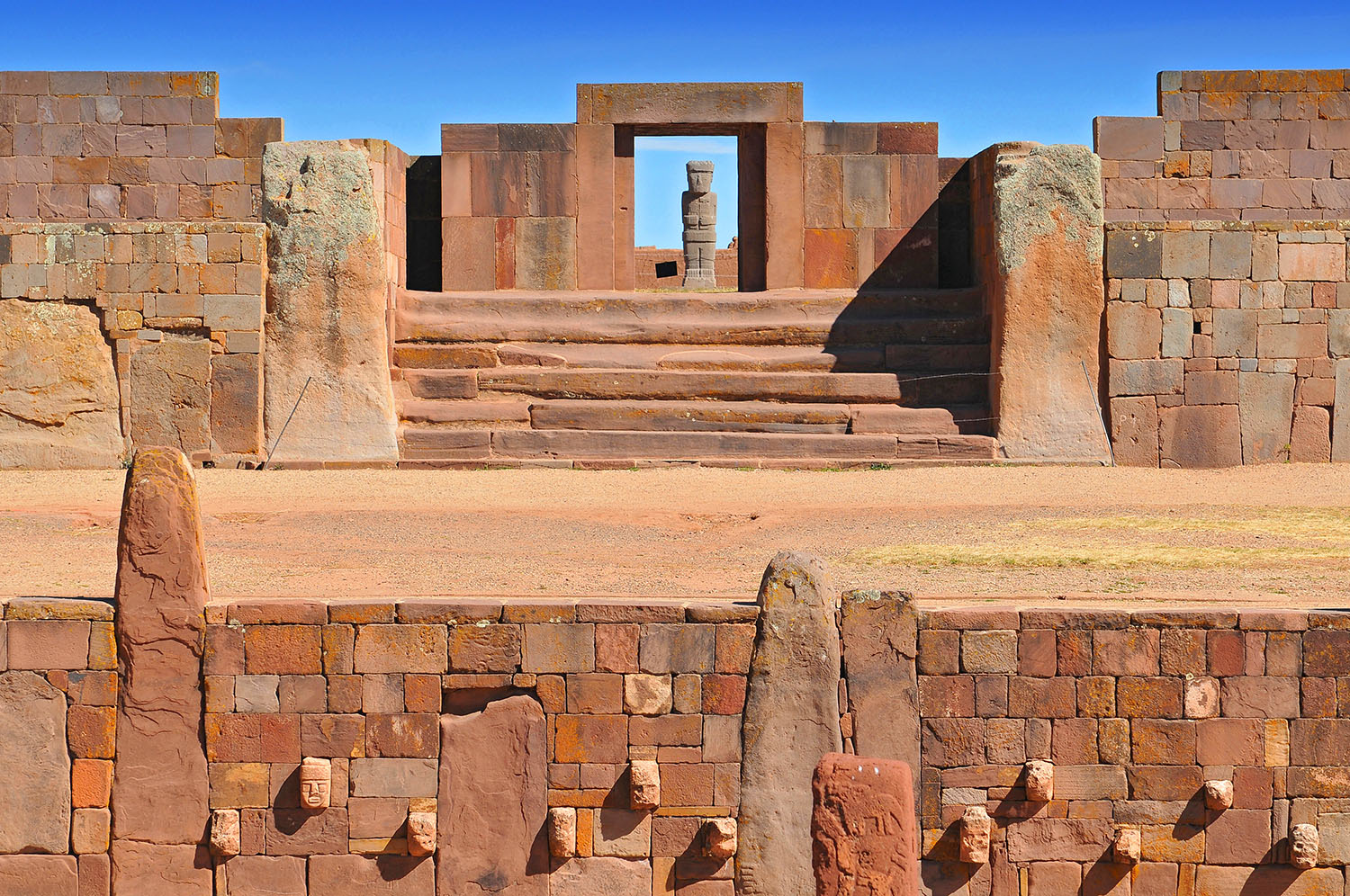
5. Excursion to the moon valley
The Valle de la Luna, the Valley of the Moon, is an imposing landscape consisting of thousands of jagged sandstone rocks that rise up like rust-red turrets and pyramids. A signposted footpath leads through the Valley of the Moon - perfect for nature lovers and photographers!
